This article is a reproduction of Josh Bersin’s November 2018 Article on LinkedIn documenting his research on employee happiness and learning. We are very grateful to Josh for allowing us to reproduce his insightful findings.
We just completed some interesting research with LinkedIn, and the results are in: if you want to really enjoy your job, spend more time learning.
In the research we just completed, we found that employees who spend time at work learning are 47% less likely to be stressed, 39% more likely to feel productive and successful, 23% more ready to take on additional responsibilities, and 21% more likely to feel confident and happy. And the more you learn, the happier you become.
Here’s the research…
We completed a large survey with LinkedIn (2,400 professionals responded [1]) and asked professionals a series of questions about where they spend their time at work. We also asked them what drives their feelings of satisfaction at work.
These seven findings are both astounding and intuitive at the same time.
1. When you ask professionals what inspires them at work, it’s all about the job and growth. (Not the free lunch.)
It’s obvious when you think about it. The most inspiring thing about work is the work itself .. and the opportunity to grow.
I talk about this frequently when I do workshops on the employee experience. Of course, we want the work environment to be great, but ultimately the employee experience is all about the job (You can read more about meaningful work).
(P.S. In the Middle East, Southeast Asia, Brazil, India, and Germany “opportunity to learn and grow” is higher than the nature of the work itself.)
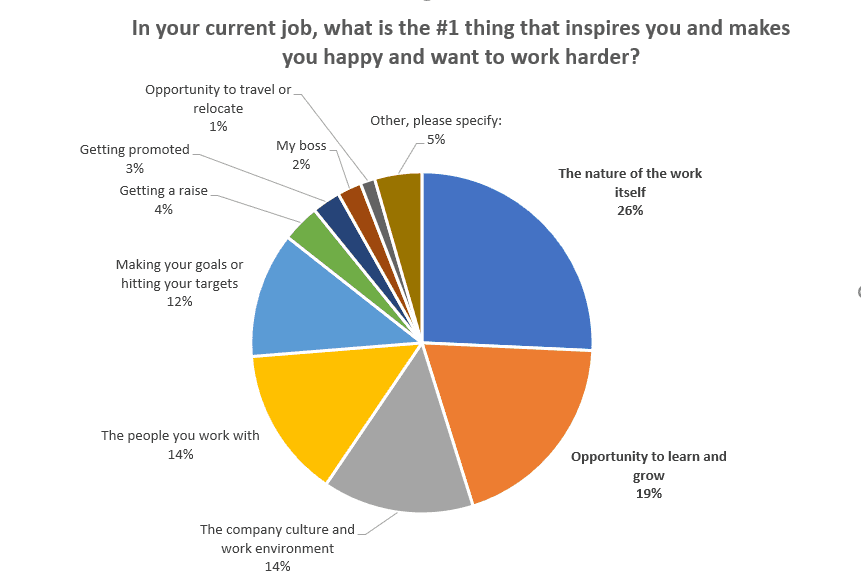
2. When you ask people why they would leave a job, it’s because they couldn’t learn.
Second, consider the answer to the question “what would make you leave your job?” Among these professionals, they state their ability to learn and grow is roughly twice as important as getting a raise, and more than twice as important than the relationship with their manager.
This reinforces the point I’ve been making for the last year:
“The Learning Curve is the Earning Curve.”
As soon as you feel you’re no longer growing, it’s time to look for a new job.
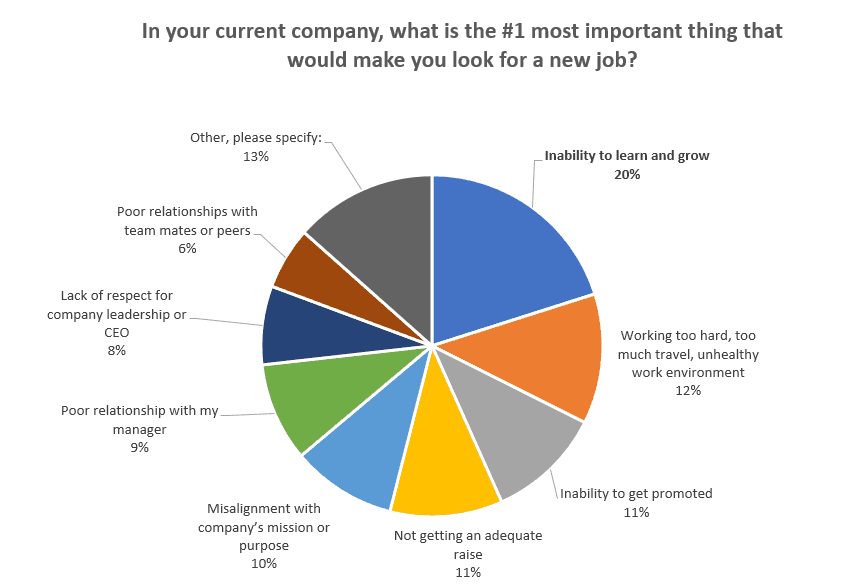
(Note: in the UK the biggest reason for leaving is “working too hard, unhealthy work environment” and in India the #1 reason is “not getting an adequate raise.” This gives you some insights on the issues in those countries.)
Sticky Learning ® is 7 times more effective than 1-day training courses. Plus, you will get a Chain of Evidence proving your Return on Investment. Discover soft skills training that changes behaviours long term.

3. Professionals work a lot of hours. So learning on the job is not always easy.
As I’ve been talking about in my talks about in the article Learning in the Flow of Work, professionals don’t have a lot of spare time. Two-thirds of us work more than 40 hours per week and almost a quarter of us work more than 50 hours a week.
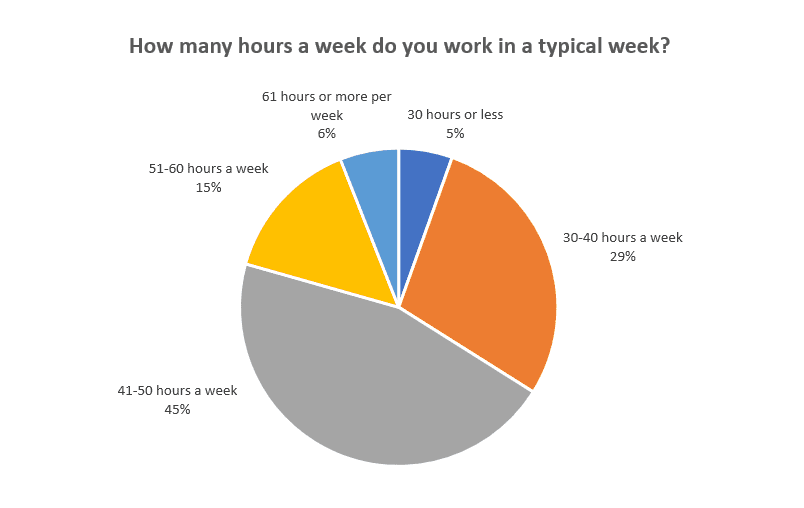
So if you want to learn and progress, you have to do it “on the job” and “in the job.” Watch my video on “Learning in the Flow of Work” if you’d like to understand this more.
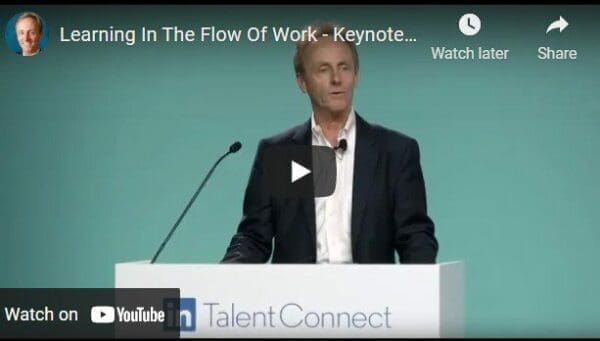
4. We waste a lot of time on email. Way too much.
We have to fight our way out of email and messaging. According to this research, more than a quarter of us are wasting a day a week on messages that don’t contribute to our jobs. This means we need to step away from work to learn, learn in the flow, and learn through projects and mentors, otherwise we won’t have time.
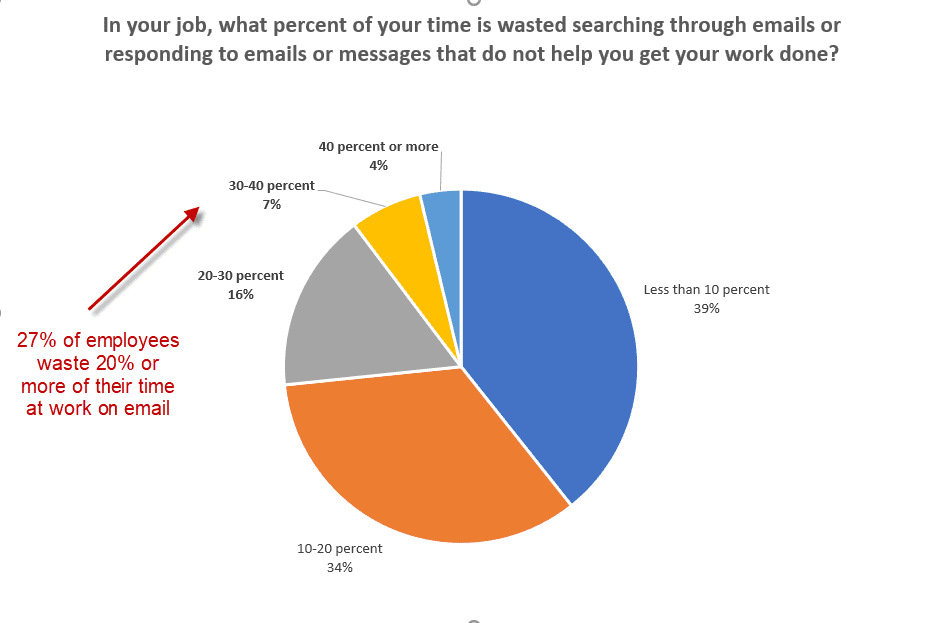
This obviously gets in the way of our ability to grow and learn, so we have to force ourselves to step away.
Here is the data by country by the way. You can see that countries with stronger growth (Hong Kong, India, Middle East, France) are harder working countries. By the way, France is now one of the most innovative growth economies in Europe.

5. Despite all this, many professionals really do find time to learn!
We looked at how much time professionals spend learning at work, and the data is amazing.
Among these 2,000+ professionals a significant number (7%) are taking up to five hours a week or more to learn. They’re reading, taking classes, watching courses, or doing other things to advance their skills and careers.
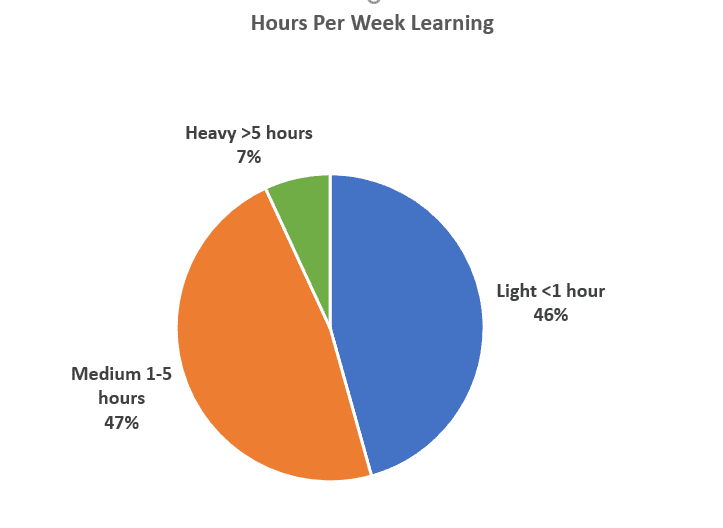
Why are they spending so much time learning? Because it pays off.
6. The Heavy Learners are more engaged, productive, and successful than their peers!
How do these “heavy learners perform?” Look at the data. It will blow your mind. They are happier, less stressed, more productive, confident, and more ready to grow.
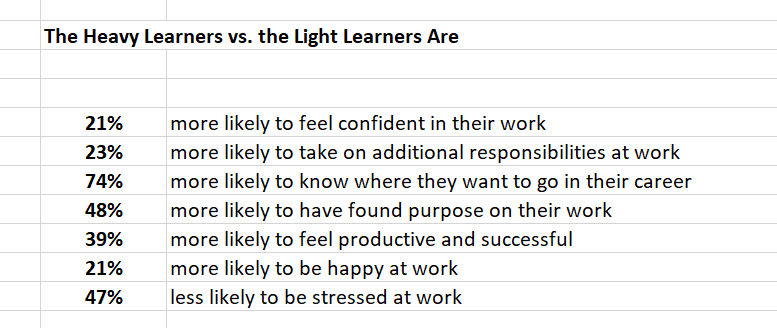
And when you look at the “medium learners” vs. the “light learners,” they are seeing similar results. 14% more happy, 13% less stressed, 16% more productive, and 32% more likely to know where they go with their career. So even spending a small amount of time learning really matters!
I also want to point out that “more learning is better than less.” The data shows that the heavy learners are seeing almost 3-times more positive results than the light learners. (Udemy’s new research shows this also.) So you have to make time to focus and learn.
7. This is not just a good thing for you, it’s good for your company.
In MIT and Deloitte’s most recent study of digital transformation (more than 4,300 executives participated) the most successful, fast-growing, digitally enabled companies are differentiated by one thing: they’ve transformed the way individuals and organizations learn.
And this means learning all the time, not just once a year. Among these highest performing companies, MIT and Deloitte found that 73% of employees in these companies are updating their skills every six months and 44% are updating them continuously. In other words, today’s successful companies are those who learn fast, learn well, and learn all the time.
Bottom Line: If you want to have a happy, dynamic career, make learning a high priority.
If you’re a professional reading this, open up your calendar and block out a few hours a week to read, take an online course, or do a developmental project of your own. I often take time on weekends, for example, to read and teach myself something new. With tools like LinkedIn Learning you can find videos on almost any topic you’re interested in.
If you’re an L&D leader or manager, consider this research in your strategy. Your job is not just to “teach,” it’s to create an environment where people can truly learn in the flow of work. Give people an environment to learn; promote and reward development; reward experts and leaders for teaching others; and look at the new learning platforms that let people learn in the flow of work.
As Thomas Picketty states in his book “Capital in the 21st Century,” learning is the key to your career.
“Over 300 years of economic history, the principal and most enduring mechanism for distribution of wealth and reduction in inequality is the diffusion of skills and knowledge.”
And it makes you happier too.
[1]About the research. LinkedIn conducted surveys of 2,049 business professionals (all roles, including 624 freelancers, project workers, and entrepreneurs) in August of 2018. This included employees from the UK, Nordics, Netherlands, Luxembourg, Germany, France, Australia, India, Singapore, and Hong Kong. These were individuals who had paid for some form of online learning through LinkedIn.




